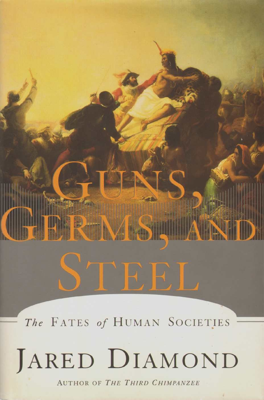FARMER POWER: The Roots of Guns, Germs, and Steel
The Emergence and Impact of Agriculture
The shift from hunter-gatherer societies to agricultural practices marked a pivotal turn in human history. Beginning around 11,000 years ago, some groups started to domesticate plants and animals, a practice that has escalated to what we now recognize as modern agriculture. This chapter explores how these agricultural developments granted certain societies significant advantages over others, particularly those that continued with a hunter-gatherer lifestyle.
Food production allowed a dramatic increase in accessible calories through the cultivation of specific plant species and the domestication of animals. This shift not only led to a denser population but also supported the formation of settlements and a sedentary lifestyle. The major direct benefit was that areas engaged in agriculture could sustain larger populations compared to regions where people continued to hunt and gather.
Advantages of Domesticated Animals
Domesticated animals provided multiple benefits:
- They were a vital source of protein, and in some cases, products like milk, which offered additional nutrition over the animals' lifetimes.
- Animals such as cows, sheep, and yaks supplied manure, which significantly improved agricultural yields when used as fertilizer.
- Larger domestic animals facilitated tilling of heavier soils with their ability to pull plows, thus expanding the range of cultivable land.
These agricultural activities contributed to higher birth rates as they allowed people to live sedentarily and manage more frequent childbearing. Furthermore, surpluses generated by effective agricultural practices supported the development of specialized roles within societies, such as craftsmen and military personnel, providing an infrastructure that could support expansionist endeavors.
Socio-political Transformations
A steady food supply led to the emergence of larger, more complex political structures. Stored surpluses facilitated the rise of bureaucracies and monarchies as some individuals could now exert control over the food supply, levy taxes, and maintain a standing army. These changes directly contrasted with the egalitarian and relatively simplistic social organization of hunter-gatherer bands.
Impact of Agricultural Systems on Conquest and Warfare
The chapter illustrates how agricultural advancements translated into military power. Food surpluses could sustain standing armies over extended periods—critical in long-drawn conquests. Furthermore, the domestication of animals, particularly horses and camels, revolutionized transport and cavalry, providing significant tactical advantages in warfare. The historical conquests by groups wielding these advantages, from the expansion of Indo-European groups to the campaigns of the Mongols and the conquests by European colonials, are underscored by the superiority conferred by domesticated crops and animals.
Diseases as an Unintended Consequence of Domestication
The close contact between humans and domestic animals led to the emergence of diseases that, while initially devastating, eventually led to immunities in human populations that continued to raise these animals. When these immune or partially immune populations came into contact with hunter-gatherer societies lacking such exposure, the result was catastrophic epidemics—another form of advantage that facilitated conquest.
Conclusion
Ultimately, the development of agriculture and the domestication of certain plants and animals laid the foundation for the development of denser, more complex societies. These societies were capable of technological innovations and organized warfare, which in turn enabled them to dominate other societies that did not adapt or evolve in similar ways. The transition from nomadic hunter-gathering to settled agriculture was therefore a key turning point that influenced the trajectory of human civilizations significantly.
